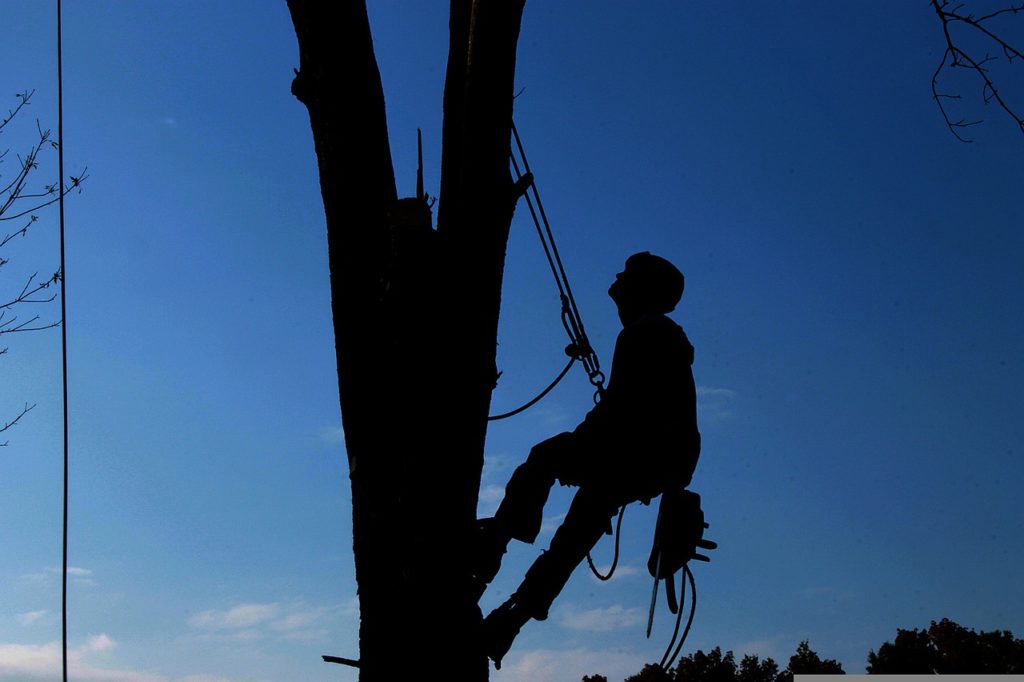Do you know what tools to use to trim your trees?

The trees are in dormant season, and it is now the best time to really see what branches need trimming. Before you begin lopping off branches, take a little time to asses the situation, know what the plan is, and ensure you have the correct tree trimming tools to do the job.
Root Branch N’All has been cutting and pruning trees for 35-plus years in Dickinson / League City, Texas and surrounding areas. Even though we are in Galveston county and close to the ocean, the Clear Lake area (right outside of Houston)has a ton of different species and varieties of trees, not just Palm Trees! From Pine to Oak, and even some endangered species, Dickinson has it all, making it a beautiful place to live and work. Needless to say, we know trees!
We are pros at pruning, feeding and beautifying, however we have a few decades worth of experience in all things trees! We know what tools are necessary to trim trees the right way. Not sure? Call a professional tree service.
Although it is very easy to rent a stump grinder, call your brother in law, and have a little stump grinding backyard BBQ, we don’t suggest it! Stump grinders are expensive, loud, and can be very DANGEROUS. We suggest all tree removal and stump grinding is always best left to a certified arborist.
Below, learn the basic and best tree trimming equipment and tools you should have on hand for those minor touch-ups.
The Top 3 Basic Must-Have Tools for Trimming Trees
The three tools below are recommend for simple, small cuts. These tree trimming tools only cut smaller branches and twigs. Don’t attempt to cut down a whole Live Oak! Call a professional if you get in over your head.
1. Pruning Shears
Also called hand pruners, pruning shears are perfect for cutting small twigs, up to 1 inch in diameter. Shears are great for simple, clean cuts on bushes or thin tree twigs.
Bypass pruning shears are Used to touch up small, live branches. The tool resembles a pair of scissors and is good for trimming twigs at awkward angles.
Anvil pruning shears have a straight, knife-like edge and should only be used on dead twigs. If your tree is in questionable health, stop pruning and call a certified arborist.
2. Loppers
With a longer handle and sturdier blade, loppers are able to cut branches up to 2 inches in diameter. They work best for medium-sized branches on cherry, magnolia and other flower or fruit trees.
Same as pruning shears, loppers come in anvil or bypass. Anvil loppers can harm live branches, so only use bypass loppers unless you’re removing dead limbs.
3. Pole Pruner
Pole pruners extend 10 – 15 feet to reach deadwood in any tree! This means they are perfect for the hard-to-reach branches on trees. Never attempt to climb on your roof to reach a branch, find a tree service with a bucket truck to help.
Most modern pole pruners have both a bypass blade and pruning saw. The bypass blade can handle branches about 2 inches thick while the saw trims slightly larger limbs. Always be aware of deadfall and swinging branches.

DIY Tree Trimming Or Call a Professional?
If done correctly, there’s no harm in minorly shaping your trees between annual pruning appointments with your arborist.
More advanced jobs should be left to a certified arborist. Tree trimming can easily turn into a dangerous task, so keep these things in mind to ensure you and your property remain safe:
- Never attempt to prune branches near power lines, doing so could result in loss of life.
- Avoid climbing a ladder and never climb on your roof to reach branches at risky heights. If you can’t comfortably reach a limb with an extended pole pruner, call an arborist.
- Don’t attempt to cut branches that are too thick for your pruning tools! Those types of cuts require heavy-duty arborist equipment and tools.